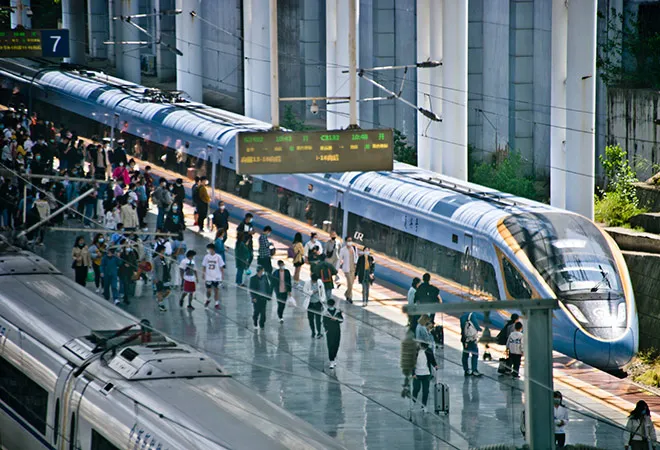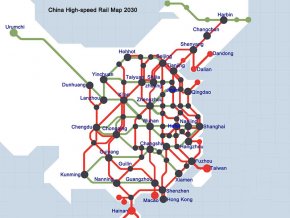This video altough I personally don't agree on the narator wholle points, put two points that he points out, that I also put before and practically most of train industrial analyst agree.
1. +/-1000km (or +/-700 miles) is the bentchmark range to make HSR/HST still attractive for consumers (thus represent 4-5hrs journey).
2. It should be only with area with enough population density
plus have capacities that can afford HSR prices.
Just like what I put in my previous posts in the begining of this thread, the cost of Airplane and HSR did not differed much. More than 4-5 hrs journey the benefits of HSR will not outmatch the benefits of Airline travels in time and conveniences.
Thus when a Railway Company being told by Political motive to build expensive HSR outside 1000Km range between 'prosperous' population centers, then the tax payers have to continue subsidising those routes close to perpetuity. No matter how good the company try to cross subsidise between profitable and busted routes, commercials reality will bite you in the end. That's what happen with China Railway.
Thus if CCP give time line for China Railway on time on subsidy, that's clearly unfair to China Railway. Again the reality of their book clearly shown they are being 'force' to enter unprofitable business decision. This is the main topic on this thread from begining, HST/HSR only can make sense if build within coridor routes that make sense commercialy. Build outside those coridors, then the Tax Payers will have to continue subsidise them without time limit.
There's no what if in business decision. The projection has to make sense and can not be ; 'it will be profitable after certain years after the prosperities in that area catch up'. That's no business decisions, but it's political decisions. Business projection for transportation case has to be base on reasonable calculations on consumers spending power growth. Not just economic growth. Both of them not altogether growing on same level.
Building routes outside profitable corridors is a no no for any transportation company. Cross Subsidise between profitable routes and non profitable one has to be done only in certain short period time. If those routes has no prospect to turn green after few years of being cross subsidise, then you have to kill it. That's what happen in many airlines after this covid. Some unprofitable routes need to be kill as the capabilities to continue doing cross subsidies are diminishing.
However it is easier to be done by Airlines or Shipping, then Railway company. Railway can not just kill a routes without thinking what happen to their rails routes investment. Unlike Airlines or Shipping even ground trucking, Railway also has to invest on the rail track infrastructure it self. More on the case why healthy Railway Company has to calculate the timing of their investment carefully.
That's why like JR Hokkaido line that I put as example, JR move on calculative timing. Cause in the end those line has to make money, unless those line being build only to fullfill Political purpose. Which's clear in China Railways Interior and Western corridor routes.
Question is on any 'Political Business Decision' how long you are going to continue subsidising. China is not the only nation where 'Political Business Decision' can happen. However don't also have a dream that most of business decisions that being drive more by Political Motivation will turn commercially viable. It will not happen, cause from begining Politics already overide Commercial viabilities projections.
Politics can give incentives for Business to make a decisions. However end game decisions has to be base on commercial motives. Without that it will be Tax Payers subsidy for perpetuity.
OBSERVER RESEARCH FOUNDATION

www.orfonline.org
This is too sum up what I wrote above. Will this meand China Railway will continue in trouble ? Not neccesary, however what it means it will continue being burden by unprofitable routes for many years to come, and China Tax Payers basically has to share the burden.
That's why China HSR models is not something that can be a model for other countries. China for one thing have regime that can push their political wills. Not many others that have economics for HSR can do what CCP done. The rest has to be very carefull with calculations on commercial viabilities on HSR/HST.




